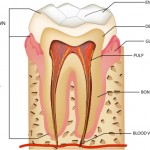
This new critical summary from the ADA-Center for Evidence Based Dentistry looks at a 2010 review from Mickenautsch et al. The aim of that review was to compare the pulpal responses to resin-modified glass ionomer cement (RM-GIC) and calcium hydroxide when placed in deep cavities.
The review only included six trials (one randomized and five non-randomized) evaluating 923 permanent and 27 primary teeth. The appraiser noted that randomized and non-randomized trials, primary and permanent teeth, and carious and non-carious teeth were combined into a meta-analysis.
Overall then, the original review was only able to find a small number of low quality studies addressing the question. This means that until more definitive evidence is available clinicians may consider both materials when restoring deep lesions.
Links
ADA- EBD Summary Resin modified glass ionomer cement may promote a similar pulp response to calcium hydroxide under deep cavities
Mickenautsch S, Yengopal V, Banerjee A. Pulp response to resin-modified glass ionomer and calcium hydroxide cements in deep cavities: A quantitative systematic review. Dent Mater. 2010 Aug; 26(8): 761-70. Epub 2010 May 7. Review. PubMed PMID: 20452013.

The appraiser’s assertion that “randomized and non-randomized trials, primary and permanent teeth, and carious and non-carious teeth were combined into a meta-analysis” in our systematic review is incorrect.
Correct is that our review included three separate meta-analyses (MA), each pooling two datasets (DS), as reported in our result section of the paper, i.e.: MA1 pooling DS 01 and 10; MA2 polling DS 05 and 13 and MA 3 pooling DS 15 and 16.
As can be discerned from Table 2 (Part 1 and 2) of our paper, only datasets from non-randomised trials concerning permanent, non –carious teeth were pooled.